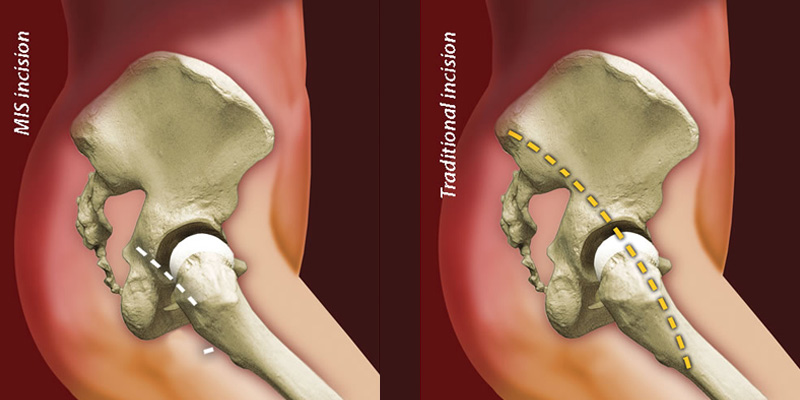
How Do Traditional And Minimally Invasive Hip Replacements Differ?
28 NovTraditional hip replacement surgery involves removal of the entire natural hip joint form the patient’s body, and replacing it with a metal or plastic prosthesis. However, there is a new kind of surgery – the minimally invasive hip replacement surgery – that has taken up the traditional surgery’s place in certain patients, depending upon the condition of the patient’s bone. In this surgery, a very small incision is made to carry out the surgery, which leads to lesser pain, lesser blood loss, and faster recovery. This new type of surgery has proven to have successful outcomes in the patients it has been performed on. But, how do we know if minimally invasive surgery is for you or not? To analyze this, let us first understand the difference between traditional and minimally invasive hip replacement surgeries.
Incision size
The traditional hip replacement surgery that has been performed for ages has involved an incision of around 10-12 inches made in the skin of the patient to remove and replace the damaged hip bone. But, minimally invasive surgery requires only 3-4 inches of incision (and a maximum of 6 inches) for the same.
Pain and recovery
The traditional hip replacement surgery requires a longer stay in the hospital, and also longer recovery time due to its larger scar. But, the minimally invasive hip replacement surgery, because of its smaller incision, results in lesser post-operative pain and lesser blood loss, which helps in faster recovery and a shorter hospital stay for the patient.
Risks
The traditional hip replacement surgery is a time-tested one, which is why it is extremely reliable. It provides the surgeon with a clear view of the hip joint due to which he can ideally fit and align the prostheses, which potentially minimizes post-surgical complications. But, it also damages the surrounding muscles and soft tissues to a great extent. However, minimally invasive surgery has its own risks too. It takes a longer time than traditional surgery, and the smaller incision gives the surgeon a limited view of the joint, which increases the likelihood of the hip components to be poorly fit or misaligned. However, all these risks of both the types of surgeries are only likely, and not mandatory.
Are you a traditional or minimally invasive surgery patient?
In the case of traditional surgery, there is no age or weight limit for eligibility of the patient. But, patients who wish to undergo minimally invasive surgery should be young and slim, and should have never has any previous hip surgery. Also, any kind of bone or joint deformity should not be present. Furthermore, the patient must not have osteoporosis as this will only increase the chance of bone breakage. So, if you satisfy all these characteristics, you could always ask your surgeon if minimally invasive surgery is for you. However, if you have no other option other than the traditional hip surgery, you must ensure that you get your prosthesis from a reliable seller – one like Aditi Corporation, where you can get superior quality and branded prostheses for total hip replacement in Bangalore.

